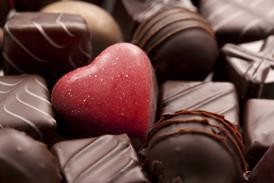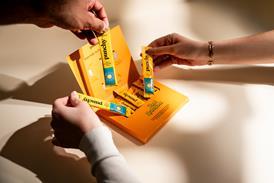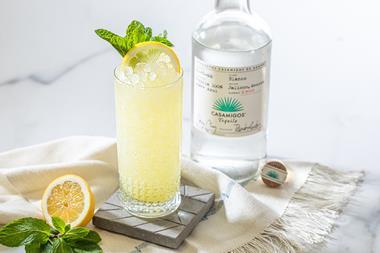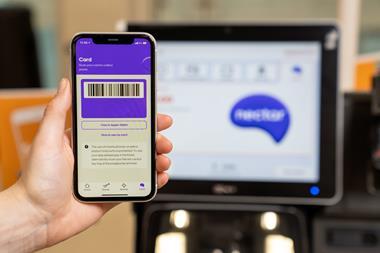Gold, silver and even platinum are words that commonly feature on food and beverage products, including tea, coffee, bread, low-fat spreads and, of course, more premium-positioned items such as wine and spirits.
With the exception of alcoholic drinks, the actual connection with precious metals usually goes no further than the brand name. The addition of gold leaf to a high-priced liqueur might make sense, but the cost would be a major issue for products in the mainstream.
In Japan, however, one of the major confectionery suppliers, Lotte, has introduced its Sasha brand of chocolate that features silver or gold leaf as an ingredient. The individually-wrapped pieces are constructed in a layered, mesh design made up of differently coloured chocolate strands and a sprinkling of very fine silver or gold leaf.
Available in a caramel cappuccino flavour, the silver leaf variant sells for around 75p for a 53g box, and the gold leaf variety at about £1 for a larger 73g box - both are affordably priced for a premium chocolate. They are presented in highly decorative boxes using a design by Chiso - a traditional kimono manufacturer - and wrapped in clear film to show the gold or silver leaf. Targeted at women in their 20s, they perfectly combine tradition, modernity, and indulgence.
Japan seems to be a world leader in using precious metals. A rival Japanese confectioner, Ezaki Glico, introduced a seasonal variant of its Pocky line of chocolate-coated biscuit sticks last winter. This was packaged with a sachet of gold leaf, for customers to sprinkle on before eating, providing an element of consumer customisation as well as the pleasure associated with the premium ingredient.
Also new in 2005 was Platinum Water from Shetech, a water-based beverage claimed to contain a minute quantity of white gold - said to fight free radicals in the body and delay signs of ageing. Precious metals clearly have a role to play in premium products with potential opportunities for functional lines as well.
With the exception of alcoholic drinks, the actual connection with precious metals usually goes no further than the brand name. The addition of gold leaf to a high-priced liqueur might make sense, but the cost would be a major issue for products in the mainstream.
In Japan, however, one of the major confectionery suppliers, Lotte, has introduced its Sasha brand of chocolate that features silver or gold leaf as an ingredient. The individually-wrapped pieces are constructed in a layered, mesh design made up of differently coloured chocolate strands and a sprinkling of very fine silver or gold leaf.
Available in a caramel cappuccino flavour, the silver leaf variant sells for around 75p for a 53g box, and the gold leaf variety at about £1 for a larger 73g box - both are affordably priced for a premium chocolate. They are presented in highly decorative boxes using a design by Chiso - a traditional kimono manufacturer - and wrapped in clear film to show the gold or silver leaf. Targeted at women in their 20s, they perfectly combine tradition, modernity, and indulgence.
Japan seems to be a world leader in using precious metals. A rival Japanese confectioner, Ezaki Glico, introduced a seasonal variant of its Pocky line of chocolate-coated biscuit sticks last winter. This was packaged with a sachet of gold leaf, for customers to sprinkle on before eating, providing an element of consumer customisation as well as the pleasure associated with the premium ingredient.
Also new in 2005 was Platinum Water from Shetech, a water-based beverage claimed to contain a minute quantity of white gold - said to fight free radicals in the body and delay signs of ageing. Precious metals clearly have a role to play in premium products with potential opportunities for functional lines as well.


















No comments yet